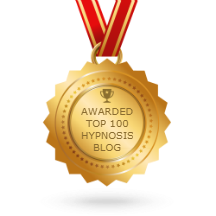By Herve Boisde
When people meditate or go into hypnosis their brainwave activity actually changes. These brainwaves can be measured with medical equipment such as an EEG. Studies have shown that when people go into hypnosis or practice meditation, their brain activity switches from the common waking patterns, or Beta, to the more relaxed frequencies associated with Alpha or Theta state. Alpha state is awake but relaxed and not processing much information. When you get up in the morning and just before sleep, you are naturally in this state. When you close your eyes your brain automatically starts producing more alpha waves. Theta is associated with light sleep or extreme relaxation. Theta is also a very receptive mental state that has proven useful for hypnotherapy, as well as self-hypnosis using recorded affirmations and suggestions.
Both of these brainwave patterns are naturally very healing for your mind and body, since they induce homeostasis and your mind sends out signals to the body that you are "safe". This safety encourages the body to heal itself, boost immunity, and regulate itself in way that wouldn't be a priority if someone is in the opposite mode, "fight or flight." This is why hypnosis and meditation is so effective at managing stress and the physical effects of stress. By learning self-hypnosis or meditation, a person can not only have a greater feeling of well-being, but also help themselves to heal, both mentally and physically.
However there's an additional tool that you can use to allow yourself to heal even more. That tool is forgiveness. Forgiveness has been shown to create spikes in Alpha wave activity in people's brains that sometimes exceeded those attained through other methods.
How To Truly Forgive & Liberate Yourself
(courtesy of Vishen Lakhiani)
Step 1: Set The Scene
Firstly, with your eyes closed and for about two minutes or so, bring back all the anger, frustration and pain you felt when someone in your life wronged you. Feel yourself in that very moment when it happened and picture the same environment you were in when you interacted with them.
Step 2: Feel The Anger And Pain
As you see the person who “wronged” you in front of you, get emotional. Relive the anger and pain. Feel it burn. But don’t do this for more than a few minutes.
Once you bring up these emotions that these people created in you, move on to the next step…
Step 3: Forgive Into Love
See that same person in front of you, but instead, feel compassion for them. Ask yourself what did I learn from this? How did this situation make my life better?
So think about what lessons you could derive from this situation as painful as it might be. How did these lessons make you better? Or help you grow?
Next, think about who this person is. What pain or anguish could they have have gone through in their life that made them do what they did.
Now there’s something important to distinguish here. “Forgive Into Love” does not mean to simply let go. You still need to protect yourself and take action if need be. Criminal acts, especially, need to be reported to authorities.
But what it does mean is that the pain of what happened no longer eats at you.

